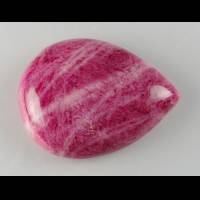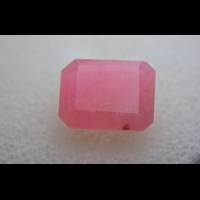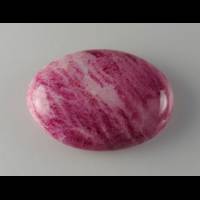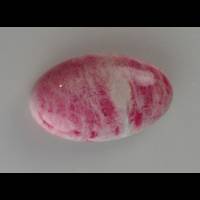Tugtupite

Narssârssuk pegmatite, Narsaarsuk Plateau, Igaliku, Kujalleq, Greenland
37.57 carats
© Rarestone.com
Tugtupite is tenebrescent: warmth and exposure to ultraviolet light from the sun or a lamp intensifies its colour (from pale pink to cyclamen red).
Tugtupite is also called a Reindeer stone.
Tugtupite Gemstones by Colour
This table shows the variety of hues this gemstone can be found in. Click on a photo for more information.
Tugtupite Gemstones by Size
This table shows distribution of Tugtupite gemstone sizes that are listed on this site. This can give a good indication as to the general availability of this gemstone in different sizes.
Contributed photos
Lightest:1.47 cts
Heaviest:37.57 cts
Average:15.65 cts
Total photos:4
Do you have a larger Tugtupite? Why not upload a photo?
| General Information | ||||||||||||||
|---|---|---|---|---|---|---|---|---|---|---|---|---|---|---|
| Chemical Formula |
| |||||||||||||
| Physical Properties of Tugtupite | ||||||||||||||
| Mohs Hardness | 5.5 to 6, Gemstones of the world (2001) More from other references | |||||||||||||
| Specific Gravity | 2.30 to 2.60, Blue Chart Gem Identification (2010) More from other references | |||||||||||||
| Cleavage Quality | Distinct, Gemstones (2009) | |||||||||||||
| Fracture | Uneven,Conchoidal, Gemstones (2009) | |||||||||||||
| Optical Properties of Tugtupite | ||||||||||||||
| Refractive Index | 1.494 to 1.504, Blue Chart Gem Identification (2010) More from other references | |||||||||||||
| Optical Character | Uniaxial/+, Blue Chart Gem Identification (2010) More from other references | |||||||||||||
| Birefringence | 0.008, Blue Chart Gem Identification (2010) More from other references | |||||||||||||
| Pleochroism | Moderate, Gemstones (2009) | |||||||||||||
| Colour | ||||||||||||||
| Colour (General) | Common white to black mottling, Blue Chart Gem Identification (2010) More from other references | |||||||||||||
| Causes of Colour | Pink, color center(s) involving sulphur, Pragmatic Spectroscopy For Gemologists (2011) | |||||||||||||
| Transparency | Opaque, Blue Chart Gem Identification (2010) Mostly opaqueMore from other references | |||||||||||||
| Lustre | Vitreous, Gemstones (2009) | |||||||||||||
| Fluorescence & other light emissions | ||||||||||||||
| Fluorescence (General) | Tugtupite shows an attractive fluorescence with the red response to UV appearing stronger in SW than in LW., Gems, Sixth Edition (2006) | |||||||||||||
| Fluorescence (Short Wave UV) | Salmon red, Blue Chart Gem Identification (2010) More from other references | |||||||||||||
| Fluorescence (Long-Wave UV) | Orange, Blue Chart Gem Identification (2010) More from other references | |||||||||||||
| Crystallography of Tugtupite | ||||||||||||||
| Crystal System | Tetragonal, Blue Chart Gem Identification (2010) More from other references | |||||||||||||
| Habit | Pseudocubic, showing short prisms with pyramids and sphenoids, Gems, Sixth Edition (2006) More from other references | |||||||||||||
| Geological Environment | ||||||||||||||
| Where found: | Tugtupite occurs in hydrothermal veins cutting sodalite syenite and syenite., Gems, Sixth Edition (2006) | |||||||||||||
| Inclusions in Tugtupite | ||||||||||||||
| May contain black needles or yellow spots - Blue Chart Gem Identification, Herve Nicolas Lazzarelli, 2010, p 9 | ||||||||||||||
| Further Information | ||||||||||||||
| Mineral information: | Tugtupite information at mindat.org | |||||||||||||
| Significant Gem Localities | ||||||||||||||
| ||||||||||||||



